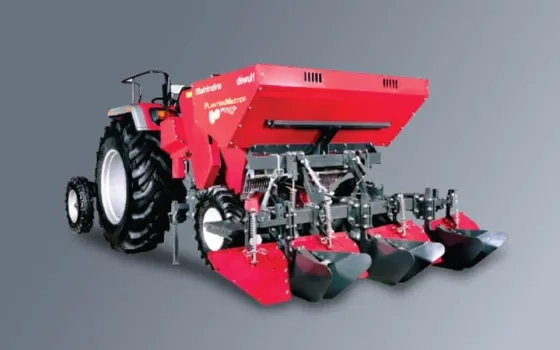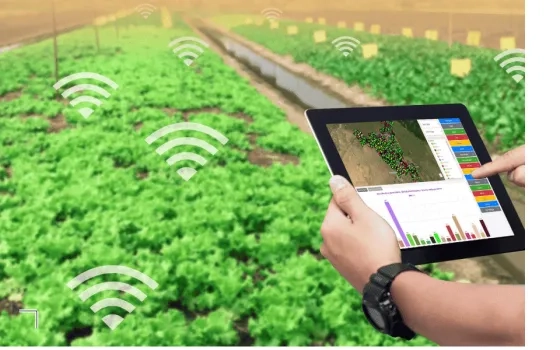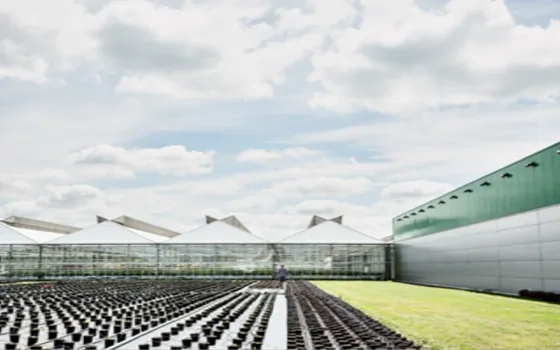#AgriVeda @AgriVeda
Food waste has huge potential for value-added ingredients. Traditionally waste products are seen as a bad thing in terms of sustainability and environmental impact along with high costs for removal or treatment. New technologies are opening up big potential for the extraction of value-added ingredients from food production and processing wastes.
The idea of extracting valuable ingredients from waste products and processing by-products is not a new one but new extraction technologies and increasing demand for natural ingredients could open up new avenues for extracting value-added ingredients. Food wastes are today considered as a cheap source of valuable components
Exploitation of the entire plant tissue could have economic benefits to producers and a beneficial impact on the environment, leading to a greater diversity of products directed mainly to human usage. As more legal requirements are implemented, the food industry will be increasingly obligated to prevent waste. The French penalty system (which fines supermarkets for wastage) and Italian incentive system (which rewards them for donating surplus food) actively encourage waste prevention.
Before going further, let’s have a look at few daily news statements in food waste category:
- Every year 100 million tonnes of food are thrown away in Europe, and this figure could reach 120 million by 2020
- Land the size of China, Kazakhstan and Mongolia is used to grow wasted food every year
- 1.3 billion tonnes of food are wasted every year, enough to feed 2bn people
- Food waste costs EU €143 bn per year and 795 million people do not have enough to eat
- In UK, it is estimated that up to 1.2 million tons of bread are wasted each year. More than 95% of this wasted bread goes to landfill where it is converted into methane.
- The researchers said that in the fruit and vegetable industry, one third of the product being discarded in processing.
- Around a billion tonnes of banana plant stems are wasted each year, despite research indicating that it would only take 37kg of stems to produce a kilogram of fibre.
- In Europe alone around one million tons of potato pulp are produced every year – of which only a minimal amount is utilised.
- Annual production of peanut meal in the USA alone is around 100,000 tons.
- 8 million tonnes of orange peel is generated annually in Brazilian orange juice industry
From these news statement, we can judge the huge untapped potential in food waste category. This untapped potential is converted into sustainable business by young entrepreneurs. Let’s have a look at 10 most commonly produced products out of food waste:
- Juices
A carrot may have two legs, an apple might be dimpled, a cucumber might be slightly discolored — all of this leads to ‘rejects? in the food system. Approximately, one-third of a farmer?s total harvest is lost due to the aesthetic standards of retailers. Contrary to popular perception, these rejected fruits and vegetables (based on aesthetic standards) are as fresh and delicious as their perfect counterparts. By sourcing these misfit fruits and vegetables, companies are developing sustainable juice and beverage production business.
- Fruit flour from seed, skin and pomace of fruits
Gluten-free foods could benefit from highly fibrous fruit flours developed from the by-product of juice and cider production. These by-product flours are high in dietary fibre and have high antioxidant properties. Eg. for the gluten-free bread, rice flour and potato starch is blended with the fruit flour and for extruded snacks fruit flour is mixed with maize flour. The blending is done to balance the taste impacts as well as provide key structural requirements needed for gluten-free bakery and snacks products
- Antimicrobial and Antioxidant foods
- Cranberry pomace, a by-product of the juicing process, may be extruded to produce a range of polyphenol-rich ingredients for use in supplements or functional foods. The resulting product could be incorporated into a dietary supplement or explored as a functional snack food. Cranberry has long been considered an effective method of fighting urinary tract infections
- Antimicrobial and antioxidant potential of ethanolic extract of mango seeds can be used to enhance the shelf life and to increase the antioxidant capacity of fresh-cut mango
- Phenolic extracts from olive oil mill waste can be used as alternatives to synthetic antioxidants in order to increase the stability of foods. Disposal of olive oil mill waste causes serious environmental problems, as many of its constituents are not easily degradable
- Onion wastes are an interesting source of phytochemicals, sulphurous compounds and natural antioxidants. Brown skin shows a high concentration of quercetin, aglycone and calcium. Outer scales could be used as source of flavonols, with good antioxidant activity and dietary fibre content
- Antioxidant waste from the soy industry could offer a cheap and healthy alternative to synthetic antioxidants that prolong the shelf life of food. The appreciable concentrations of flavonoids, along with phenolic acids and other antioxidant phytochemicals present in soybean might be responsible for their free radical-scavenging activity
- Industrial by-products from tomato processing contain a significant amount of bioactive compounds that could be used to provide natural and sustainable source of antioxidants for functional food formulation, or to act as preservative ingredients in foods
- Similar to wine and grape juice, which are known to contain natural antioxidants, up to 50% remain in the waste material left behind when the skins, stems and seeds are filtered
- Pectin
- Each ton of dry cocoa bean produces ten tonnes of cocoa pod husk waste. An average of 10 grams of pectin could be extracted from every 100 grams of husk by-product. This way for each ton of dry cocoa bean production, one tonne of pectin could be extracted from the husk waste. Extraction of pectins from the main by-product of cocoa production would not only help to reduce the costs of the production of cocoa products but would also manage the disposal of this waste in an environmental friendly manner through the use of a natural and safe food additive
- Waste orange peel is an excellent example of a wasted resource. By volume, half the orange fruit is left as waste once the juice has been recovered. Use of technology could allow the generation of valuable food ingredients like pectin on large scale. The ‘green? approach could help dispose of waste products whilst also turning a profit.

- Potato pulp “is an underutilized material produced in large quantities by potato starch factories. Potato waste could provide ‘new generation’ of food ingredients like pectin. Extraction method promises large-scale extraction of potato fibres rich in pectin and functional hydrocolloids.
- Enzymes
- Through solid state fermentation, it is possible to develop a multi-enzyme solution rich in glucoamylase and protease from waste bread. In the last two decades, solid state fermentation has attracted interest in western countries due to its advantages in the production of secondary metabolites, and production of novel foods.
- Waste from pineapple processing could provide a range of value added ingredients for the food industry, including a new source of the enzyme bromelain. Bromelain is an enzyme that is usually extracted from the stems or juice of pineapples. It has been used commercially in the food industry, dietary supplements, and the cosmetics industry – where it is known for meat tenderising, brewing, baking, and for the production of protein hydrolysates, among other things. Waste portions provided a significant yield of the enzyme with peel supplying between 29 and 40% by weight.
- High protein High fiber flour
- Dried distillers grain, produced during ethanol processing has until now only found use in animal feed. The flour produced is a high protein, high fibre (36% protein and 40% fibre) ingredient that could be used as a substitute flour in a number of food applications
- Peanut meal is the defatted, low-value, byproduct of commercial peanut oil production. Advances in enzyme technologies, coupled with new technologies to remove aflatoxin, may offer a way to produce the by-product meal, which is an excellent source of protein (containing between 45–55%).
- Mushroom waste can boost fibre and lower glycaemic response in extruded snacks. Stalks and basal clumps retrieved from spent mushroom compost can be refined as a freeze dried powder called mushroom co-product material (MCM). The inclusion of MCM significantly increase the amount of total dietary fibre (TDF) in the extruded snacks
- Textiles
Forget about cotton, we could be making textiles from banana, pineapple and coconut.
- Banana fibre: The fabric is claimed to be nearly carbon neutral and have soft texture. The material is having application in making jackets, skirts and trousers.
- Pineapple fibre: It is used as an alternative to petroleum-based textiles. The greatest thing is that it?s made of leaf fibres, a byproduct of the pineapple harvest. The industrial process used to produce pineapple fibre also produces biomass, which can be converted into a bio-fertiliser and the fibre is also biodegradable.
- Coconut fibre: A thousand coconuts can produce 10 kg of fibre. A blend of fibre with polyester is particularly good choice for sportswear
- Fuel and Fertilizer

- Organic waste from companies food processing plant can be converted into a renewable natural gas. Organic waste from the plant is converted into biogas through Anaerobic Digestion process. The biogas is then purified to become renewable natural gas which can be used in the same was as conventional natural gas. The renewable natural gas displaces conventional natural gas which is used to support the energy needs of the plant operation.
- In addition, a high-quality fertilizer is produced as a byproduct which in turn is used to support healthy growth of local vegetation.
- Molds
The designer custom-made molds with a mixture of agricultural byproducts and mushroom mycelium, can result in lightweight, biodegradable lamp shades. Mycelium is introduced into a mixture of chopped up corn stalks and seed husks, and begins to spread its white fibers and digest it. Once coated in mycelium, the mixture is broken up into particles, which can easily be packed into molds, and left to grow for a few days until it forms a completely solid structure
- Fats
Seed waste may be source of new fats. Fat from seed kernel ‘waste products? could provide the food industry with a new source of edible oils. Eg. rambutan seed kernels provide a considerable yield of fat with high arachidonic acid content and that makes the fat highly stable to oxidation. Because of these physical and chemical characteristics, rambutan kernel fat is perfectly suited for the cosmetic and food industries. The increasing demand for oils and fats, whether for human consumption or for industrial purposes, necessitates the search for new sources of novel oils and fats. Fat extraction from seed waste could be as high as 37% by weight.
For more details, please feel free to write to admin@agriveda.com
















